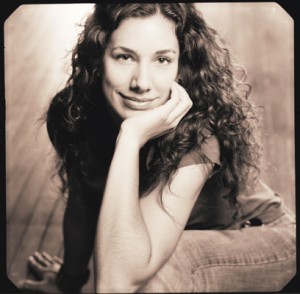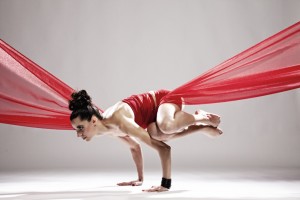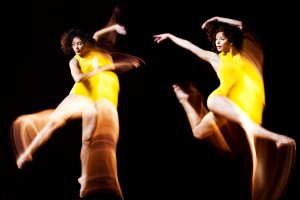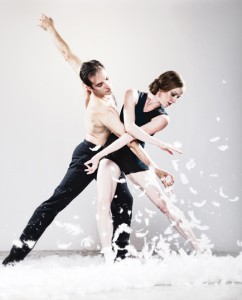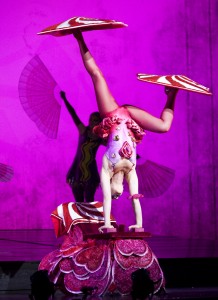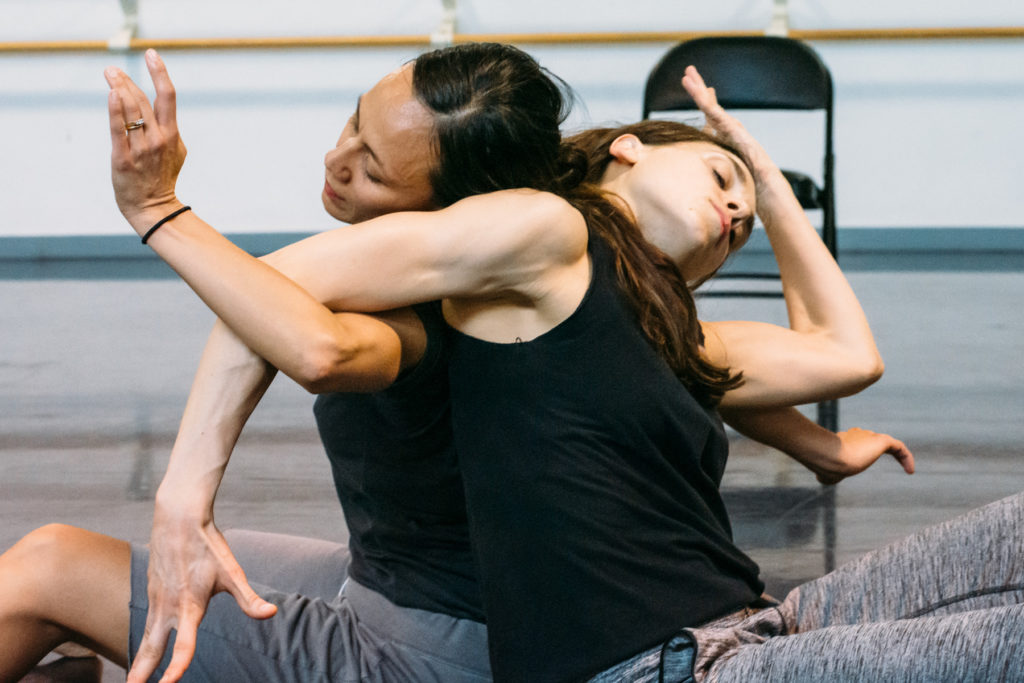
Photo by Chloe Hamilton.
Chicago’s annual benefit performance, Dance for Life, is a time for community. It’s a time for celebrating dance–and dancers–right here in our city. It’s a time for coming together, and a time for reflection.
This year’s performance offers a great variety of talented dancers and dance companies, as well as a “first look” at Echo Mine, a work choreographed by former Hubbard Street Dance Chicago dancer and award-winning choreographer Robyn Mineko Williams. The piece was inspired by the late Claire Bataille—one of HSDC’s founding dancers, as well as a choreographer and director of the Lou Conte Dance Studio.
We are fortunate to be able to share excerpts from a recent conversation with Robyn, regarding how this piece came into focus, and how the decision was made to included it in this year’s Dance for Life Chicago performance.
You have deep roots in the Chicago dance community. Can you describe your journey from dancer to choreographer in broad terms?
The pathway from dancer to choreographer was not one I expected. When I left Hubbard Street in 2012, I didn’t intend to stop dancing, but choreographic opportunities presented themselves. The more I did it, the more I enjoyed it and found that I had a voice on the other side of the lens. I knew that I was not ready to leave the world of dance. So it’s been an interesting but unexpected career path. When I was a dancer, I thought I’d leave Hubbard and go back to math school, become a math teacher, open a bakery—so I’m very surprised, but not surprised, that I’m still immersed and feel passionate about being an active member of this community.
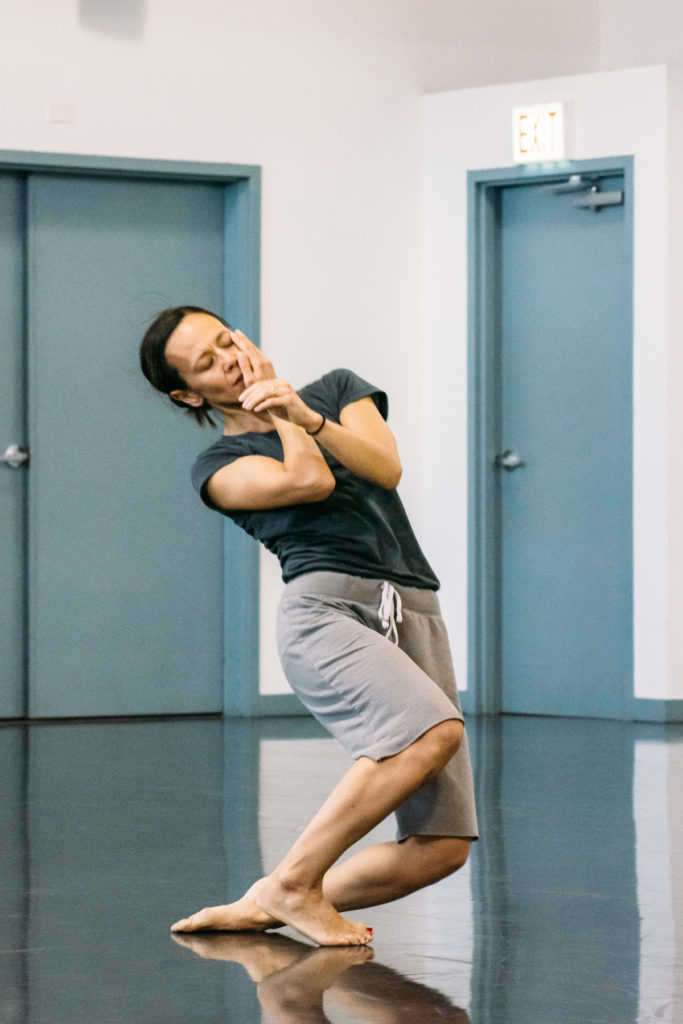
Claire Bataille is a well-known figure in the Chicago dance community. Would you comment on the sense of loss that has been felt with her absence?
Speaking only for myself, it is a huge loss because of the incredible range that she had during her 40+ years in the dance community—dancer, teacher, mentor, friend. When I walk into Lou Conte Dance Studio, I still expect to see her even though I know I’m not going to. She’s been a constant for me and for thousands of people. She’s just part of the web, like the bones of the dance community. Michael Anderson [former Joffrey dancer and now Chicago Dancers United/Dance for Life board member] and I both noticed that, at Claire’s memorial last winter, so many different people were there, not just spanning generations but from many parts of Chicago and beyond. Claire was so much more than Hubbard; she brought dancers together. She was a key figure, like the glue for all of us.
How did this piece wind up coming about for Dance for Life 2019?
The solo I performed at Claire’s memorial was a work in progress and is now part of Echo Mine. I started to reach out to different people in the dance community for advice about a good venue for this piece and other general, technical questions. This is my first independent work on this level—a 50-minute, full-evening work for proscenium. I’d been in the studio and working with composer Tim Rutili of Califone, so creative elements had been in the works for a long time, but the logistical aspects of how to get it to a stage were things I didn’t know. So I reached out to people who I thought could help me. Michael Anderson wanted to bring the piece to Dance for Life as an option, especially since they knew they’d be paying tribute to Claire this year, so it was a good fit. There was some discussion of Hubbard doing Georgia—which they do a phenomenal job with—but it would be hard not to imagine Claire. So Echo Mine is inspired by and of Claire, and made alongside and with her, but not something she had done—it’s more representative of now.
It’s also really important to me that people know that this started with Claire. This is not a piece about cancer or about Claire’s past. I was really interested, and she was too, about creating something together in the present moment, of her today, and all of her history and my history is part of it, they’re ingredients. When I asked Claire what she wanted, she said it was important to tell a story, and I felt it was important that it be about “present Claire.” And after she got sick, she was still OK with that. As this piece comes more and more together, I see that it’s a snapshot of this amazing time we were able to spend together and make something in the present.
I started talking to her about it in early 2017; that was when original idea came up, because I was encouraged to apply for a grant from Chicago Dancemakers Forum. So this was the idea that came to mind: to work with Claire and see her perform my movement and see how much of my movement is actually her. To see her dance again, and for me to be in the room and create with her, would be the coolest, most rare gem. How often do you get to do that with your idol? A person who you looked up to, who you had posters of in your room? I sheepishly asked her, thinking she would never do it, and she said OK, let’s explore it! She agreed to it, we talked a couple times about early ideas, themes—ironically, she brought up the theme of loss and how it’s been a thread throughout her life, and this was before she got sick. We had one rehearsal in October and a month later she was diagnosed with cancer. In late January 2018, I contacted her again to see how she felt about continuing, and she was fine with it. At first she wasn’t comfortable going back into the studio, not because she physically couldn’t do it but emotionally. But in July she did feel well enough, so we were in the studio for about a month, off and on, and we made a solo for her together, and now that’s the source material for the whole piece. It was such a gift. Regardless of her being sick or not, it was such a great excuse to hang out with her and learn more from her and hear her Hubbard Street stories, which brought to life the photos I had of her.
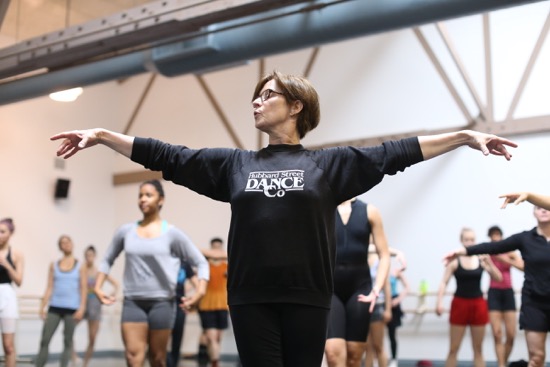
Can you share a bit about your connection with Claire?
My connection with Claire changed. I saw her dance with Hubbard Street when I was nine, and from that moment on, I thought, “This is it.” So I started as an observer, a fan; when I was a teen, I started taking classes with her. Then at 16, I was on scholarship at Lou Conte Dance Studio for a couple years. When I joined River North, she was our ballet mistress. So our relationship evolved. I joined Hubbard in 2000 when she was still rehearsal director. One of my favorite memories is this: I had auditioned a number of times, and I decided to try one more time in 1999. I went to an open audition, and I think Lou [Conte], Jim [Vincent, income artistic director] and Claire were there. I got the job and Claire said that she asked if she could be the one to call and tell me. So I got the call from Claire, and she said I screamed bloody murder, and when she hung up, her son Isaac asked if she thought I’d call my Mom right away because he could hear me screaming. I remember my first day at Hubbard in class, and she welcomed me to my new home. While at Hubbard I got to know Claire on a different level; I was less socially awkward around her and could talk to her about various things like both of us being moms. So our relationship matured and evolved. I was able to spend time with her, and she was really important to me.
How has this piece taken shape? What’s the process you have used to craft it to specifically honor Claire?
I’ve been talking with Tim Rutili about this as long as I talked to Claire about it. He and his band have composed an original score, which is very different than anything I’ve ever done. He created it after watching videos of Claire and of Claire and me, listening to interviews, and not making it literal but taking it all in and doing his thing. I also have a set and projection designer, Deborah Johnson (aka CandyStations), and will integrate film components. It’s important that we see Claire, and now it’s becoming more evident that the story is a snapshot of this experience I’ve had. I want to finish and share it, keep it simple. I find, as a maker, I tend to go a bit smaller and do what I know and hope that it resonates and makes sense. My story doesn’t have to be the story everyone in the audience gets but I hope it’s filled with enough honesty and humanity that people can take that and make their own thing out of it. And part of what I’m figuring out now is the story and its arc. Part of my initial desire to make a work with Claire is to share beyond Chicago who Claire was—people need to know about this woman and how great she was. I want it to be an introduction for some and a validation or reminiscence for others.
How did you go about selecting dancers for the work?
Originally it was supposed to be a solo for Claire. When she fell ill, I asked Jacqueline Burnett to dance. Then I realized it was not going to be 10 minutes, it was something larger, so I thought we needed more than one dancer. I was very reluctant to dance myself, so I brought in Meredith Dincolo. We’re sort of different generations of Hubbard Street and had different relationships with Claire, but we were all lucky enough to have a solid time with her. In rehearsals, we have an understanding of Claire’s essence. We were all around her, learned from her, watched her—we don’t have to talk about it, we just know. I’ve never danced my own work; I’d rather be outside, it’s easier to create that way. I don’t feel like I need to get back onstage; I feel good about my career, and there’s no unfinished business. But I’m dancing this because it makes sense conceptually. I took myself out maybe four times, but now I’m committed to doing it.
Dance for Life Chicago 2019 takes place at the Auditorium Theatre on August 17th. Tickets are available online, or at the door that evening. 4dancers is proud to serve as a long-time media sponsor for the event. Learn more about the performance, or about DFL’s parent organization, Chicago Dancers United here.





